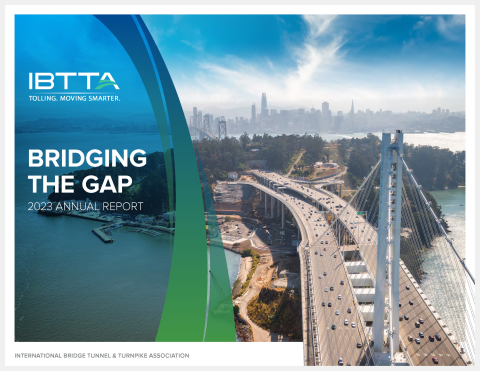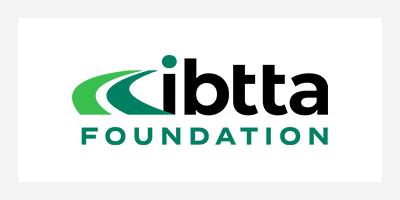- Home
- Panama Canal Expansion Means New Business, More Freight For U.S. Toll Operators
Stories
Panama Canal Expansion Means New Business, More Freight for U.S. Toll Operators


An infrastructure project half a continent away, in a transportation mode that scarcely touches dry land, will be one of the biggest catalysts for business discussions during IBTTA’s 2016 Summit of the Americas, October 16-18, 2016 in Mexico City.
To make the story even more enticing, it’s a project built on a funding model that will look awfully familiar to anyone who’s ever had anything to do with a tolled highway, bridge, or tunnel.
In June, Panama celebrated the end of a nine-year, $5.4-billion project to expand the Panama Canal, a mammoth undertaking expected to amp up trade and freight volumes across Latin and South America, and between Mexico and the United States.
“Previously the maximum size of the ship that could make the passage, known in shipping circles as Panamax, was limited by the size of the Canal’s locks and the depth of the water,” Huffington Post reported shortly after the opening. “Building the new locks allows for so-called neo-Panamax ships with a capacity nearly three times (14,000 containers instead of just 5,000) that of Panamax ships to travel the Canal.”
“Just” 5,000 containers on a single, now-obsolete Panamax vessel. And we wonder why U.S. and global freight volumes have been rising so fast, creating congestion headaches for commuters and new impetus for tolled capacity!
Panama Expansion Means U.S. Trade
The sheer size of the project is pretty much unprecedented by highway construction standards.
A 50-mile re-excavation of the connection that bisects the Isthmus of Panama, allowing ships to pass between the Atlantic and Pacific oceans.
A project budget that almost makes the billion-dollar highway megaprojects in some parts of the U.S. look routine by comparison.
And a breadth of geographic impact that easily extends into the U.S. market.
“Excitement about the Canal expansion has been rippling across the hemisphere for years. Ports on the United States’ East Coast and Gulf of Mexico have been racing to expand and make room for larger vessels and more cargo going to and from the Far East—cargo that previously had to dock on the West Coast because of the Canal’s previous limitations,” HuffPo stated.
“American coal and grain exporters are salivating about easier and cheaper access to markets in China and elsewhere in Asia.”
With one panel session on the program, and lots of local expertise on hand for informal hallway discussions, the Summit of the Americas will give participants an inside look at a project that is already transforming the entire North American market.
Tolling Makes It Happen
If you ever need evidence that tolling makes efficient freight transportation possible, look no farther than the Panama Canal.
The tolls ocean-going shippers pay to cross the isthmus are calculated in Twenty-foot Equivalent Units (TEUs), about the size of a standard freight container. At $90 per TEU, the current rate for passage through the canal is probably a good thing to keep in mind the next time a freight customer objects to a $100 highway toll.
But by their behavior, shippers are giving every indication that they see the toll as a bargain. In July, HuffPo reported that 170 neo-Panamax ships had booked slots on the canal over a three-month span.
“The first vessel to transit the new locks was the Chinese COSCO Shipping Panama, which set sail from Piraeus on June 11 carrying 9,472 TEUs and measuring just under 300 meters (about 1,000 feet) in length,” reported correspondent Kathleen Peddicord, publisher of Live and Invest Overseas. “Assuming its owners didn’t get a discount for being on display for the crowds, it paid a toll in the range of US$850,000.”
The expansion alone is expected to bring in $2.1 billion in annual revenue—on top of what Panama already receives from a piece of critical infrastructure that has been in place since 1914.
So “if you’re wondering where the cash comes from to fund the seemingly boundless public works projects in the works here in Panama,” Peddicord writes, look no farther than the canal.
And that might be the most important lesson participants at IBTTA’s Summit of the Americas will take away from a closer look at the transportation infrastructure scene in Latin and Central America.
The Grandparent of All Toll ‘Diversions’
“The Canal previously accounted for about 15% of the country’s GDP, so doubling its capacity makes for some compelling math and easily leads one to conclude that the country’s prospects remain bright for the foreseeable future,” HuffPo notes. “It’s not only the Panamanian government that stands to benefit from the canal expansion. The private sector is stepping up in a big way,” and “Panamanians are aware that the best way to take advantage of the expanded canal is to build around it.”
So rather than objecting to a toll, the cost of which is undoubtedly built into the retail price of any goods that stay in the country after they cross the canal, Panama is happily “diverting” an astonishing tally of toll revenue to other public infrastructure, while the business community thrives on ancillary activities associated with a busy marine toll road.
How much easier would it be to get managed lanes built and congestion under control in the United States with that kind of heads-up understanding of why transportation infrastructure matters, and how tolling can make it happen?
Register today for IBTTA’s Summit of the Americas, October 16-18 in Mexico City
Photo courtesy of http://micanaldepanama.com/expansion/

Joining IBTTA connects you to a global community of transportation professionals, offering unmatched opportunities for networking, knowledge-sharing, and collaborative innovation in the tolling and transportation sector.
Follow IBTTA on social media for real-time updates on transportation trends and collaborative opportunities.





